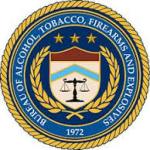Here they go again – patting themselves on the back for the good work they do protecting America from the scourge of gun violence. We do have a scourge of gun violence, but whether the ATF does anything in response to this problem other than releasing self-congratulatory and misleading reports remains to be seen. The latest such missive, the ATF annual Firearms Trace Data, covers 2014 and Is advertised on the ATF website as containing “critically important information.” This sounds impressive, but let’s spend some time trying to understand exactly whether this ‘critically important’ information has any bearing at all on efforts by law enforcement agencies to deal with gun violence.
 In 2014 the ATF traced 246,000 guns, of which 175,000 were handguns, 65,000 were rifles and shotguns, 245 were “unknown types,” (I love that category), the remainder various pieces of crap. Here’s how a trace works. The cops get a gun and then send a trace request to the ATF which includes the manufacturer and serial number and the reason why the gun is being traced. The ATF then contacts the manufacturer and a paper trail from factory to distributor to dealer to first buyer is created by contacting each point in the trail in turn.
In 2014 the ATF traced 246,000 guns, of which 175,000 were handguns, 65,000 were rifles and shotguns, 245 were “unknown types,” (I love that category), the remainder various pieces of crap. Here’s how a trace works. The cops get a gun and then send a trace request to the ATF which includes the manufacturer and serial number and the reason why the gun is being traced. The ATF then contacts the manufacturer and a paper trail from factory to distributor to dealer to first buyer is created by contacting each point in the trail in turn.
Of course once the gun leaves the shop with the initial buyer, that’s it. And the ATF has absolutely no way of knowing whether the gun being traced was sold to someone else, or stolen, or ‘trafficked,’ - a meaningless word if I ever heard one – or whatever. The ATF keeps a missing/stolen list of guns but the only people required to report such guns to this list are federally-licensed gun dealers.
In addition to describing the gun, the agency making the trace request must also specify the reason for the request. Here’s where things get very interesting. There are 64 different reasons why a trace is made, ranging from homicide and aggravated assault to such serious threats to community safety as abortion, bribery, election laws (I’m serious), forgery, gambling and the greatest scourge of all – found firearm. This last category by itself covered more than 22,000 traces in 2014; i.e., nearly 10% of all traces. Of the 246,000 total traces conducted by our intrepid ATF in the process of protecting us from gun violence, I’m being generous by saying that 25% involved guns picked up during or after the commission of serious crimes. Yea, yea, I know. All those other guns might have been used in serious crimes, and I might actually go on a diet later today. In my state, Massachusetts, the cops asked the ATF to trace roughly 1,200 guns. Know how many were associated with violent crimes like homicide and assault? 44 guns. That’s five percent.
Along with telling us which gun shops sold all these crime guns, the ATF report also discloses another pile of data that is indispensable in the fight against gun crime, namely, what the ATF refers to as ‘Time-To-Crime;’ i.e., how long between when the traced gun was sold and when it was traced, the idea being that guns that are purchased as ‘straw sales’ will end up being used in crimes more quickly than guns sold to law-abiding purchasers. In 2014, the ATF says that TTC was just under 11 years. So if a bunch of guns came from a gun shop with a much briefer TTC, obviously this is a shop where something nefarious is going on.
Let me break the news to the ATF gently. The firearms inventory of most gun shops consists of 30%-40% used guns. Since TTC is only calculated on the initial sale, the TTC numbers are off by a factor of 30% to 40%,. Want to base public policy on data that might be 40% incorrect? I don’t.
I have no issue with regulating a consumer product that is as lethal and dangerous as a gun. But the regulators should at least know something about how the industry operates they are regulating. The ATF trace report proves that they don’t.
Recent Comments